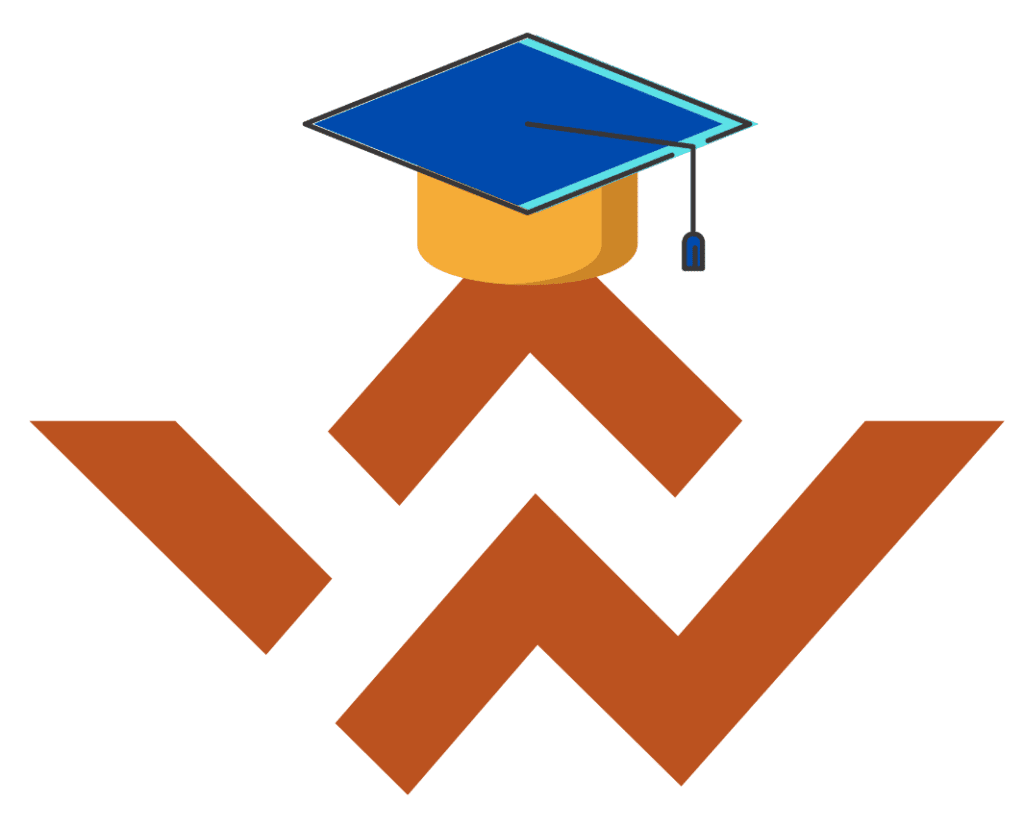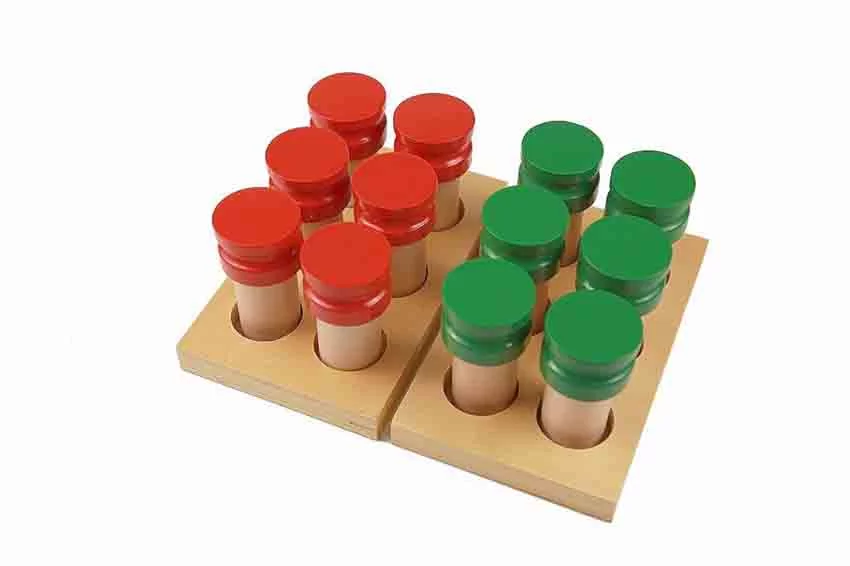
Montessori Smelling Bottles
This sensorial lesson is designed for 3-6 year old children to introduce them with different smells and stimulate their olfactory sense. Montessori education always encourages children to learn through hands-on experiences, stimulating their senses to explore and engage with the world. Smelling bottles, a key part of Montessori sensorial education, allow children to discover the […]
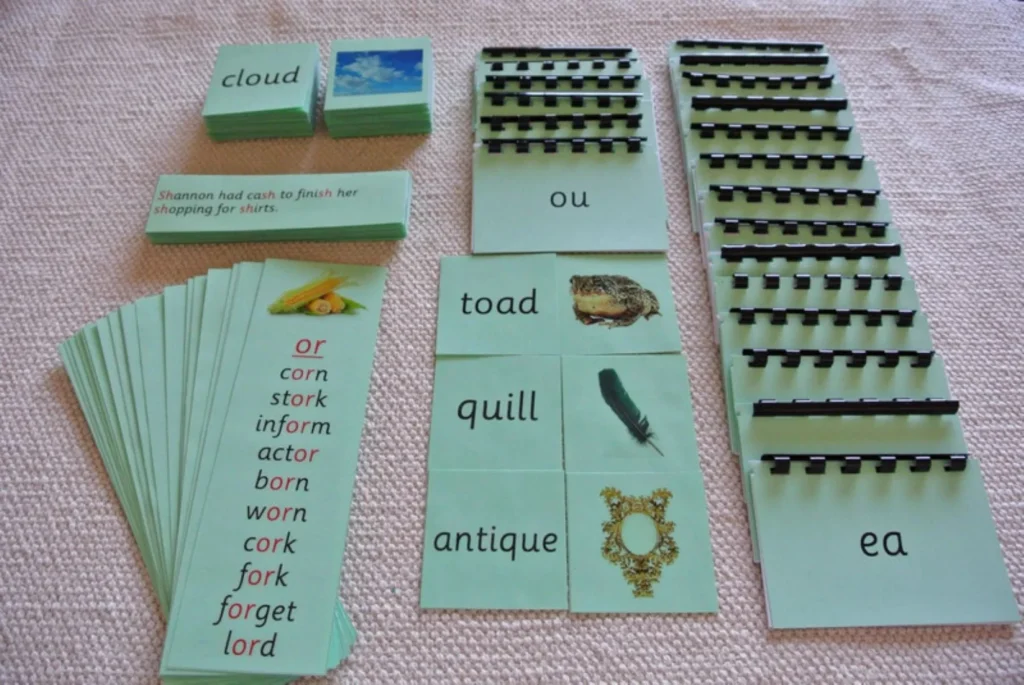
Montessori Green Series
This Montessori language lesson is designed for 6-12 year old children as they move to more advance learning. After exploring the wonders of the pink series and blue series, the green series is the final stage of the Montessori language journey. The Green Series in Montessori is a crucial step in a child’s reading journey. […]
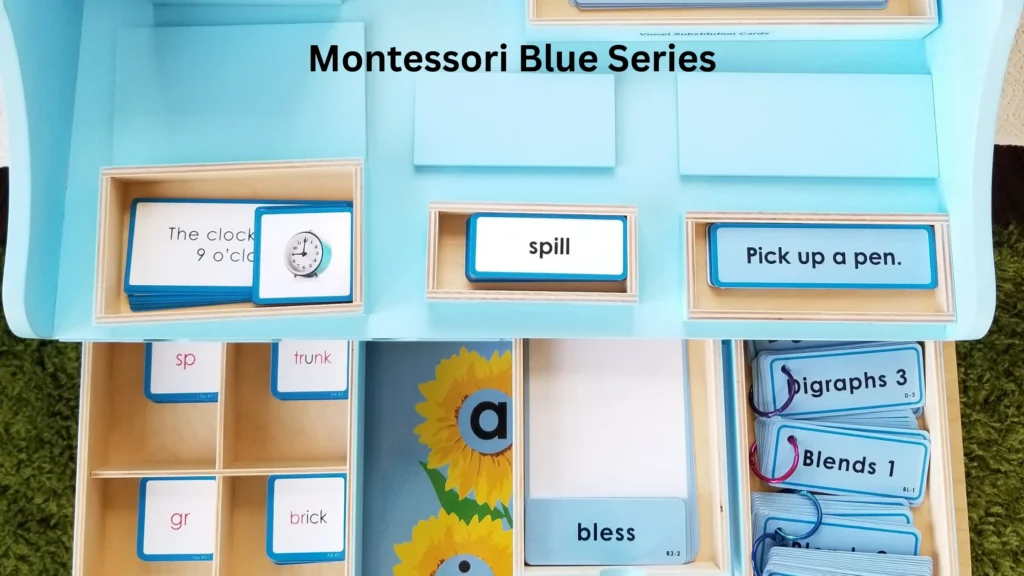
Montessori Blue Series
When a child starts learning blocks then they make small blocks first. Then put those small blocks together to make bigger ones. The Montessori Blue Series is like that for words. After learning simple words, children start to build longer words using special sounds called blends. It’s like a fun puzzle where kids learn to […]
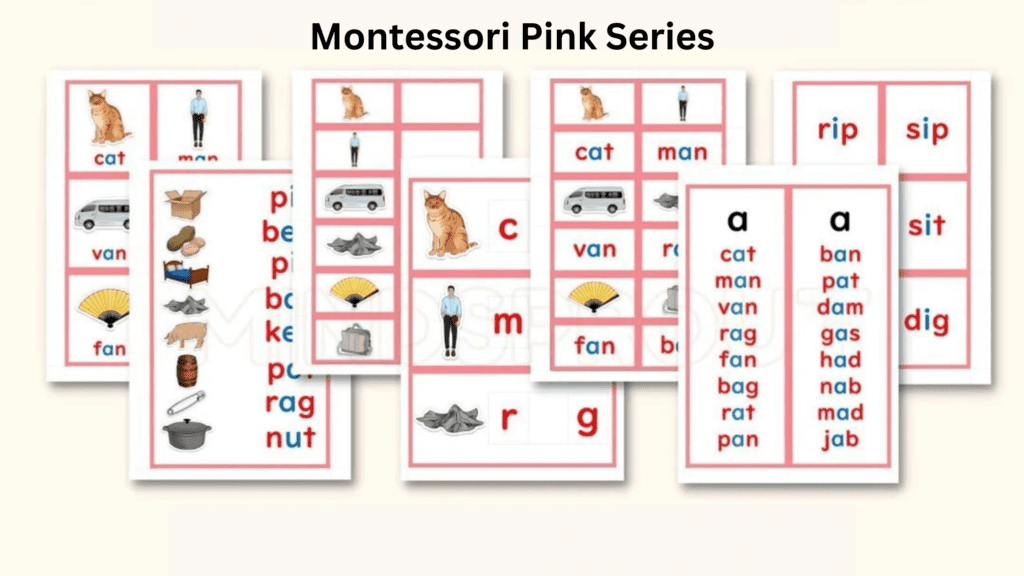
Montessori Pink Series
The Pink series is a part of the Montessori Language Curriculum. This is used to teach letter formation and its variation to primary-level (3-6 year old) children. The journey of reading begins with a single step. In Montessori classrooms, the language curriculum (sentence formation is divided into 3 parts: pink, green and blue series. To […]
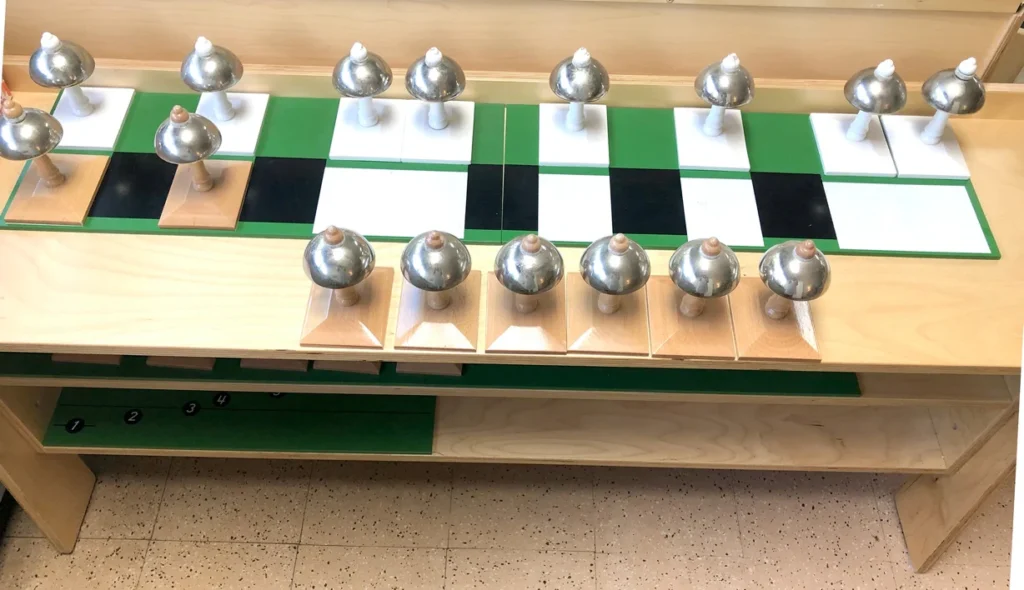
Montessori Bells – Montessori Sensorial Lesson
The Montessori bells, or ‘sound bells,’ are a sensorial lesson designed for primary-level (3-6-year-old) children. Montessori bells help them understand auditory discrimination and recognise different sounds. What are the Montessori Bells? The Montessori Sound Bells are a crucial element of the Montessori sensorial curriculum. These bells are meticulously designed to aid children in developing auditory […]
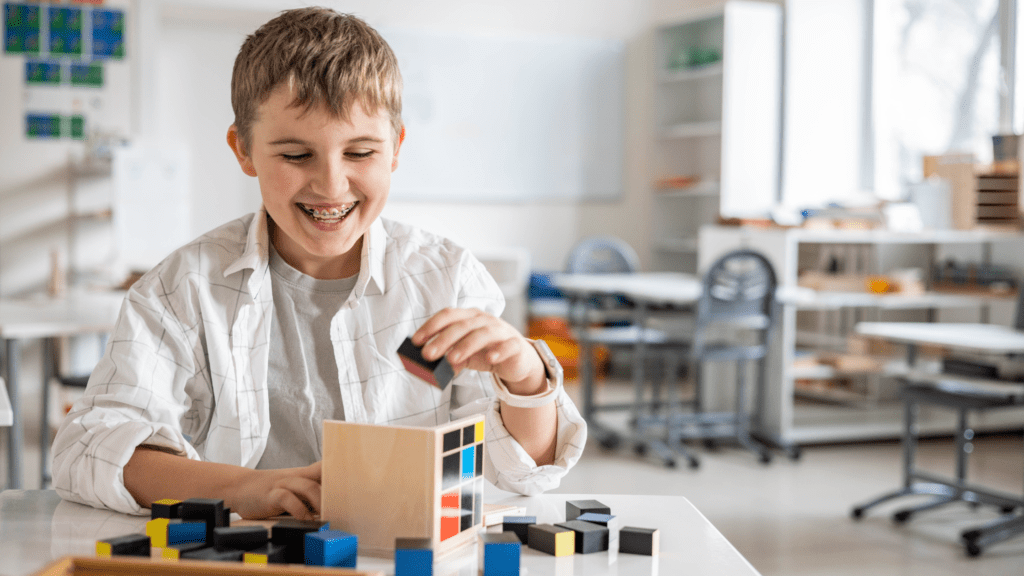
Montessori Trinomial Cube
Montessori Trinomial cube is another sensorial material in Montessori education that could help a child learn allergic expressions without much hassle. It is introduced to the child after they get familiar with the Montessori Binomial Cube. What is a Montessori Trinomial Cube? A Trinomial cube consists of 27 wooden blocks in varying colours and sizes […]
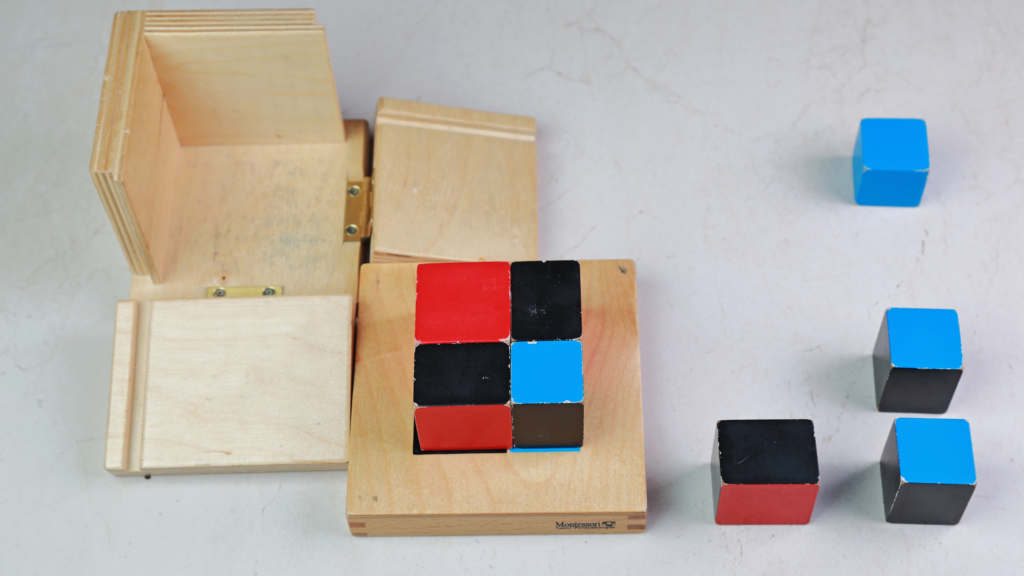
Montessori Binomial Cube
Do you wonder if a 4-year old child can learn some algebraic expressions? Yes, they can. Montessori binomial and trinomial cubes are two such sensorial materials in Montessori education that could help a child learn allergic expressions without much hassle. The Montessori Binomial Cube is an iconic educational tool designed by Dr. Maria Montessori to […]

Knobless Cylinders
Knobless cylinders are a part of Montessori sensorial curriculum to help them learn the visual differences. It is introduced to the children aged 3-6 years old i.e. at the primary level. In this lesson, we will learn more about knobless cylinders, how they are introduced to the child and help them distinguish between objects and […]

Geometric Solids
This Sensorial lesson is designed for 3-6 year old children to help them learn about different shapes using Montessori Geometric Solids. It is one of the versatile Montessori activity which can be clubbed with more complex activities. Let’s learn more about it. What are Geometric Soilds? In Montessori education, geometric solids are three-dimensional objects that […]
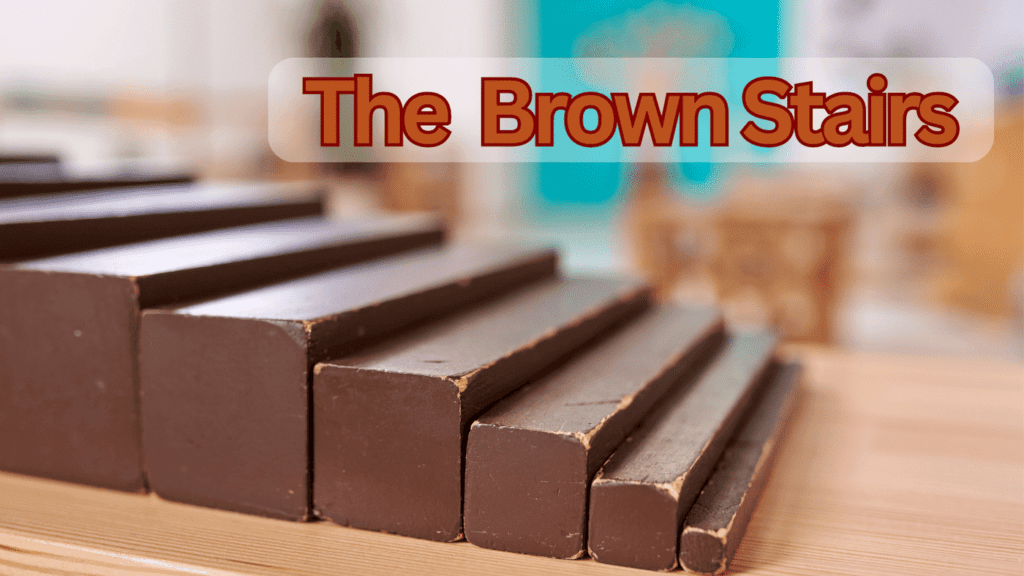
Montessori Brown Stairs (Broad Stairs)
The Montessori Brown Stairs are a sensorial material used in Montessori classrooms for children ages 3-6. They are made of ten wooden blocks that increase in size. The Brown Stairs help children develop visual discrimination, hand-eye coordination, and depth perception. They also lay a foundation for math concepts.
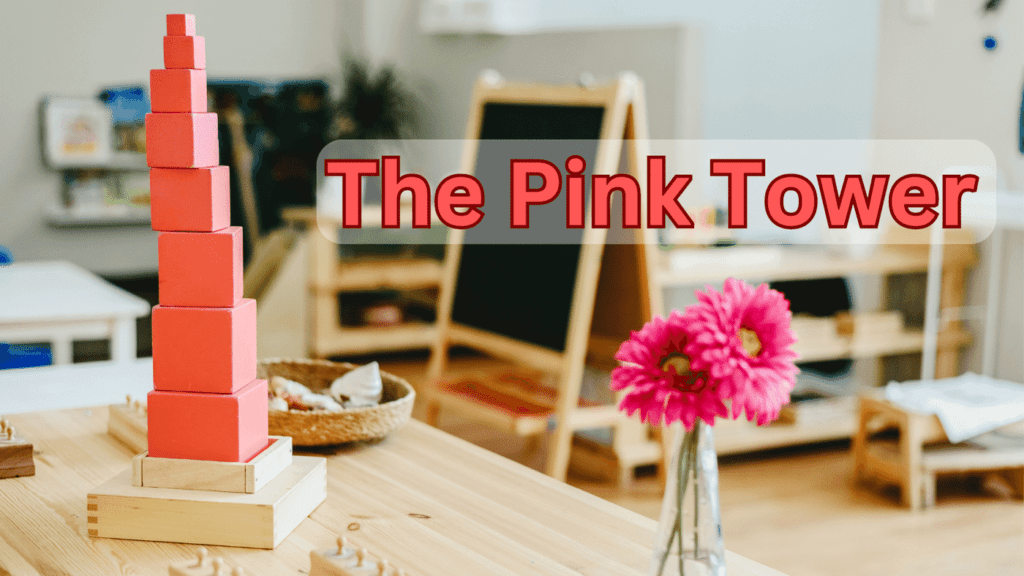
Pink Tower
The Montessori pink tower is a sensorial lesson designed for primary-level (3-6-year-old) children. The pink tower helps them to understand the concept of order. “I found that a sense of order was necessary in life, and this sense of order was awakened in the child through the right kind of discipline, which it had been […]
